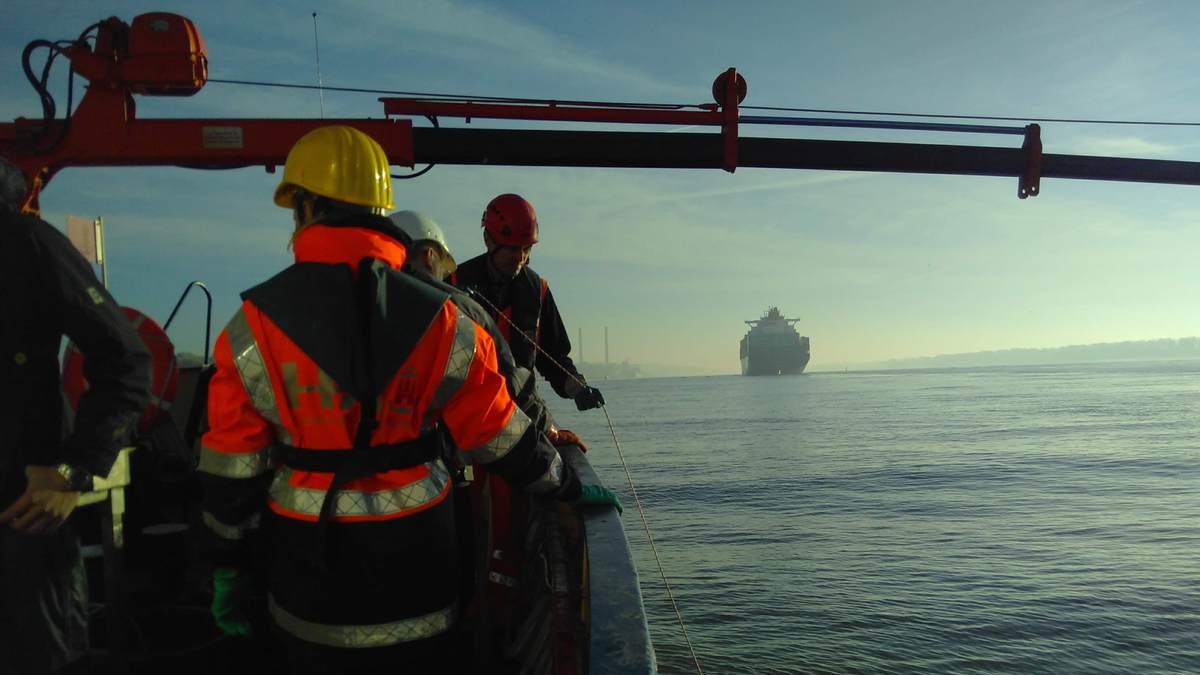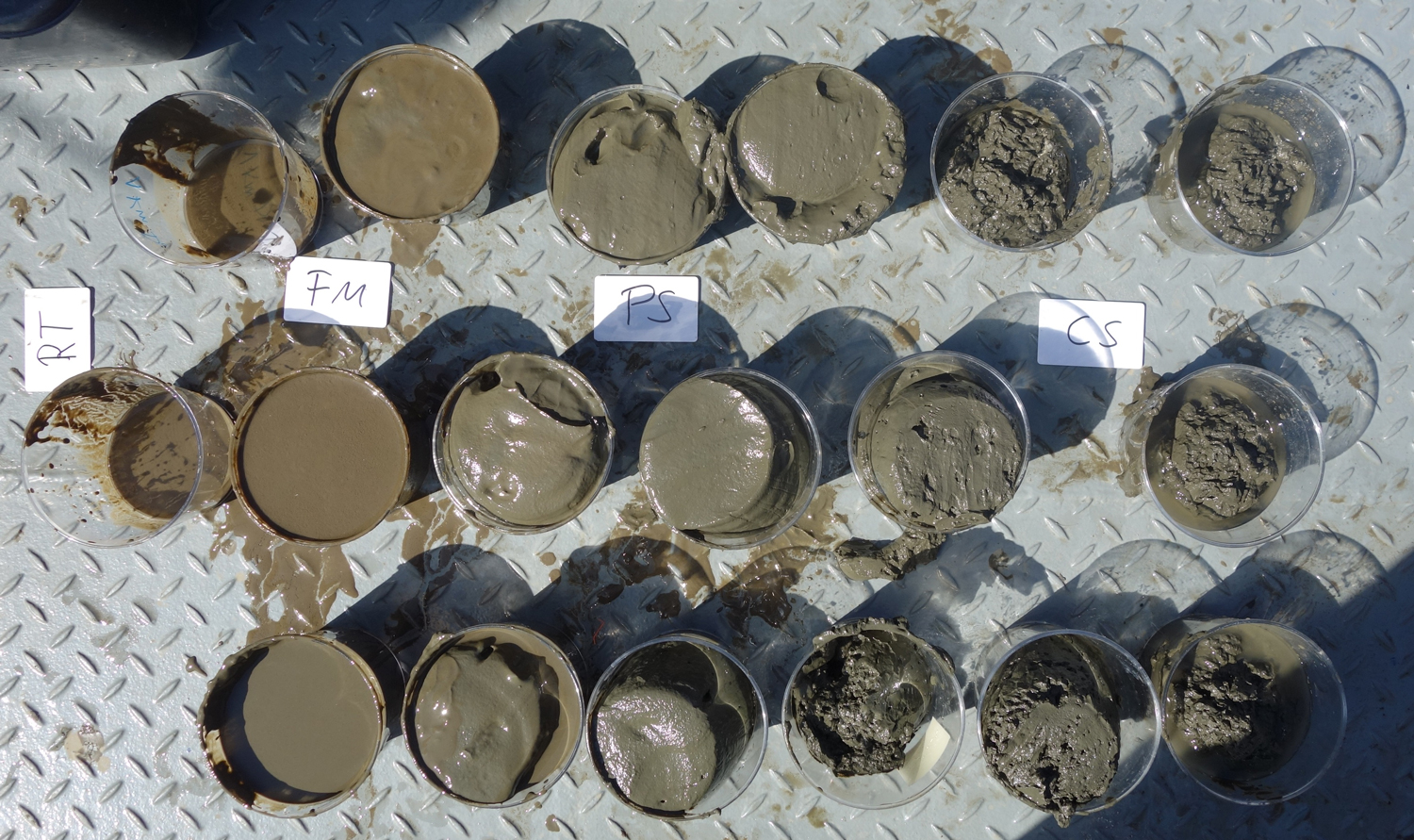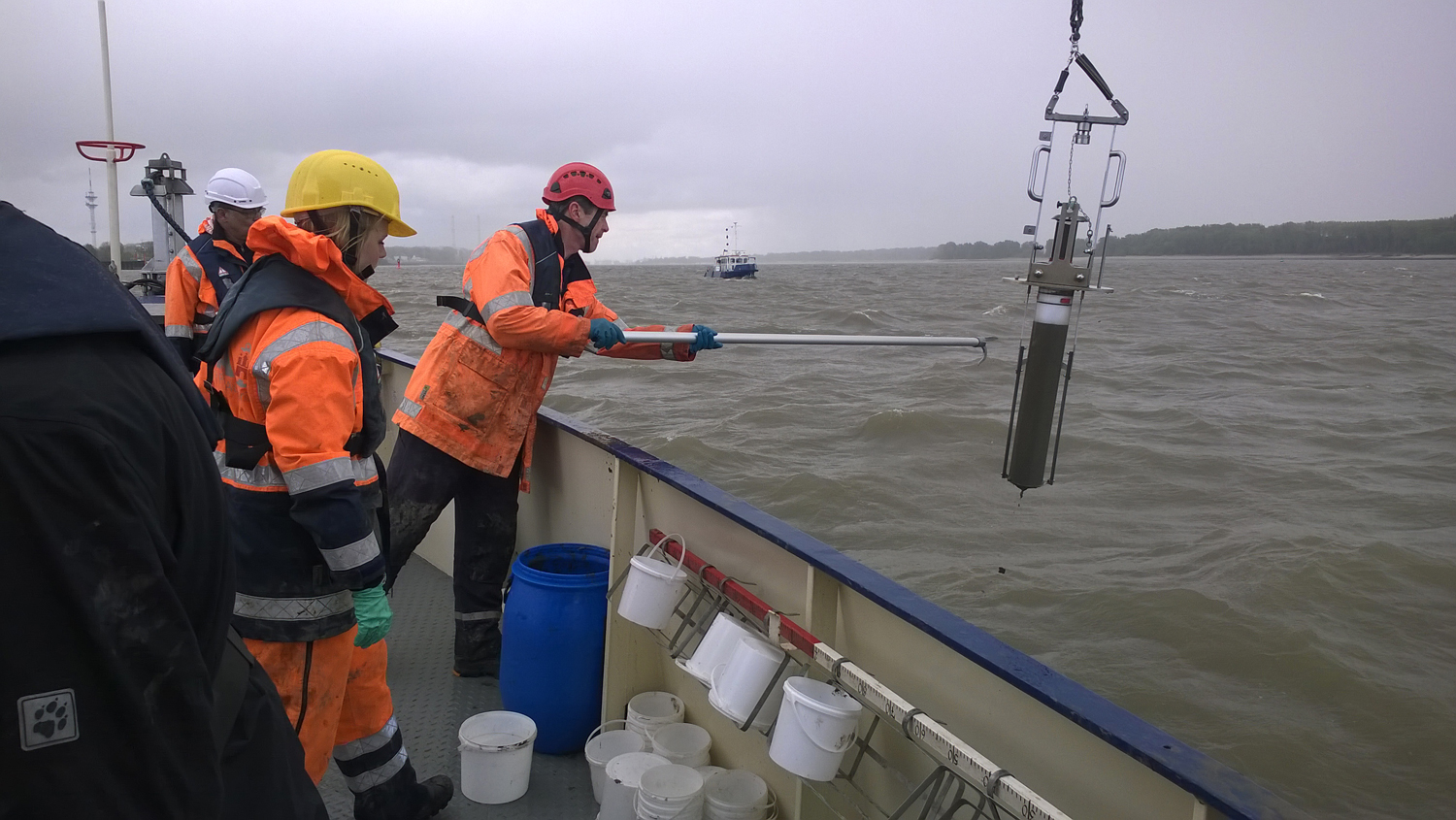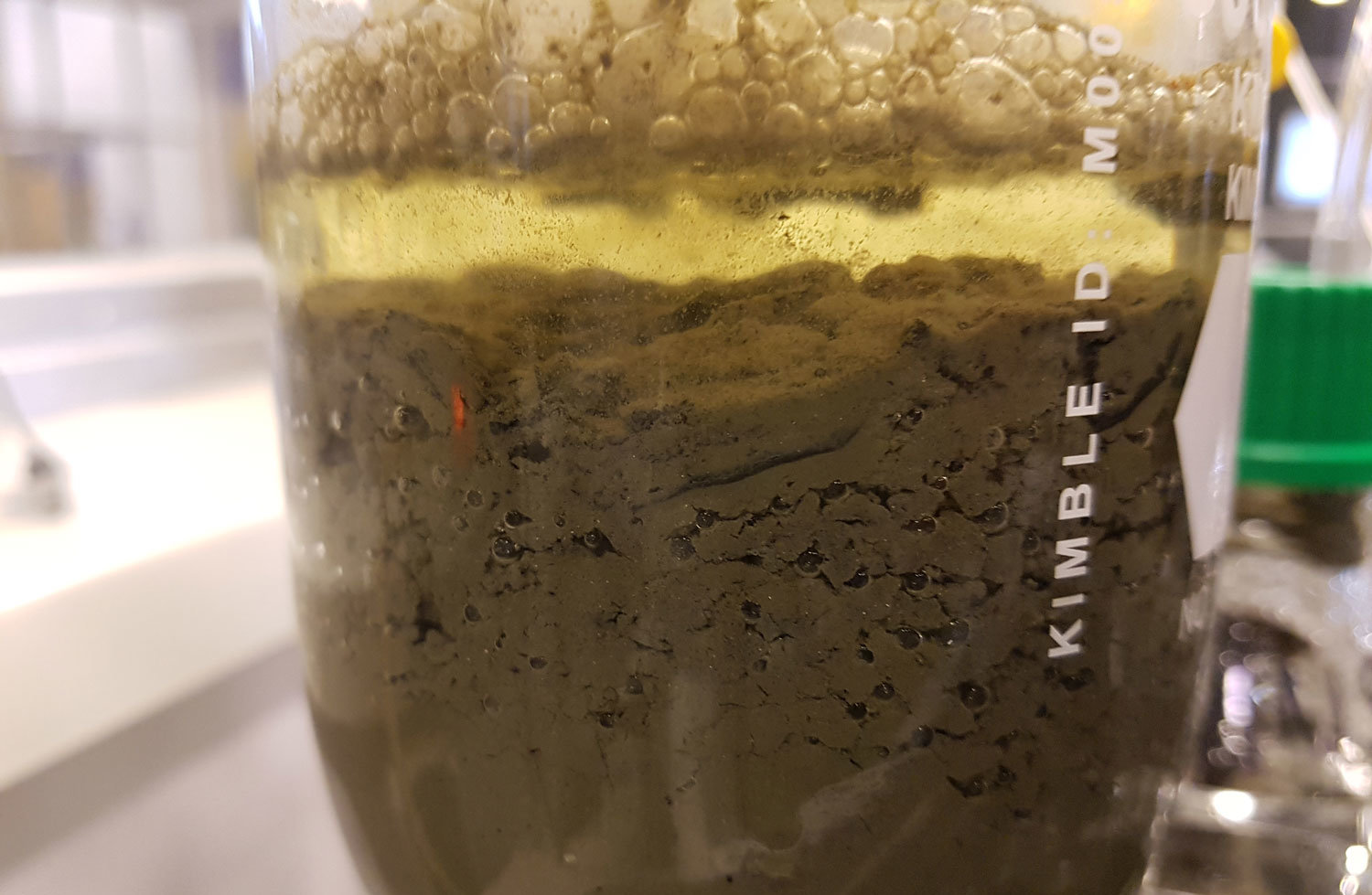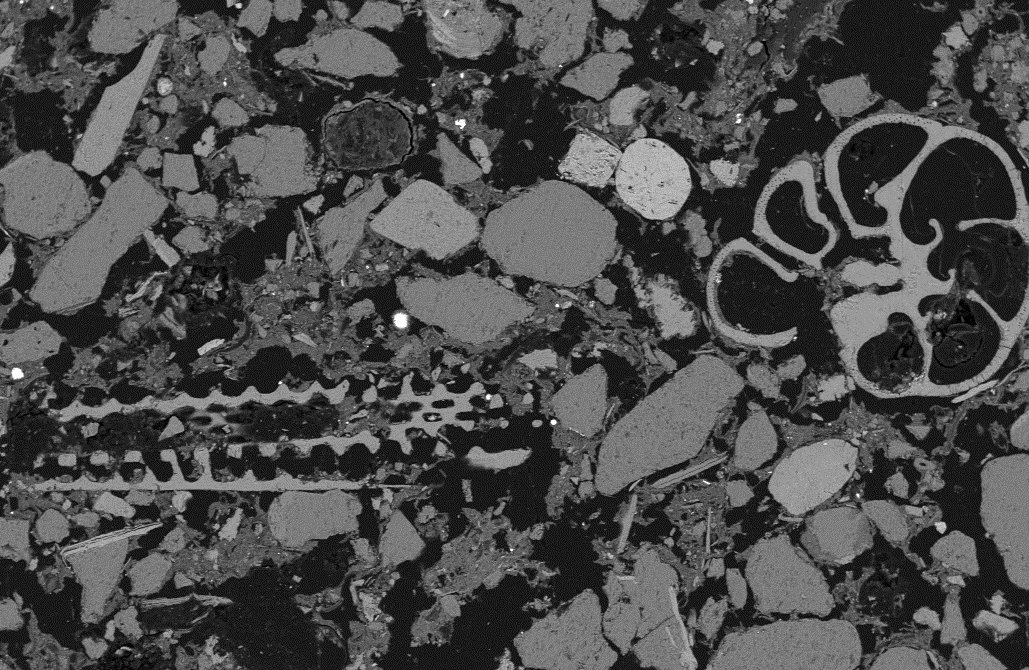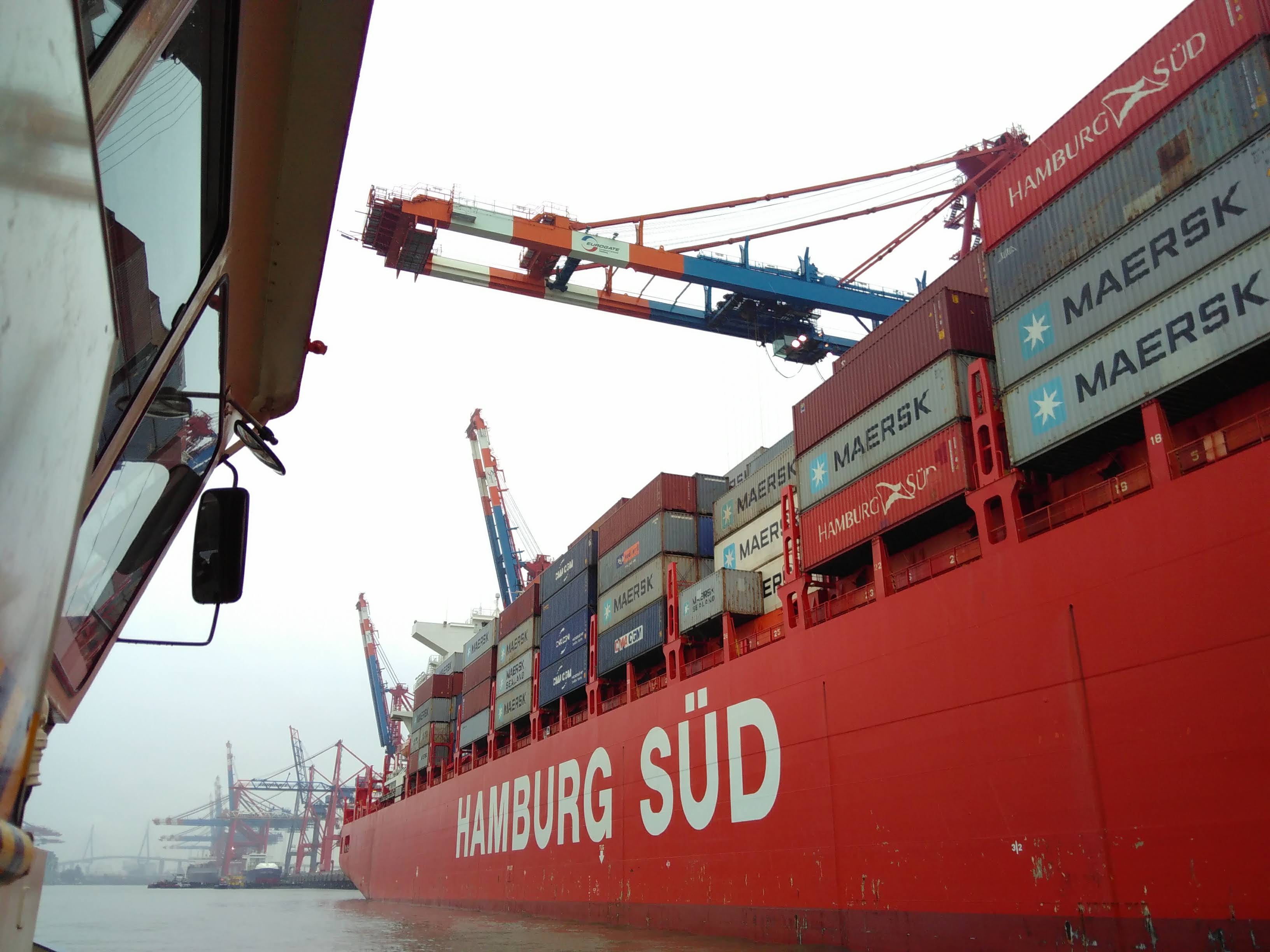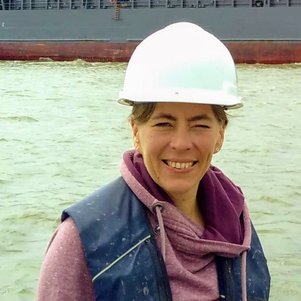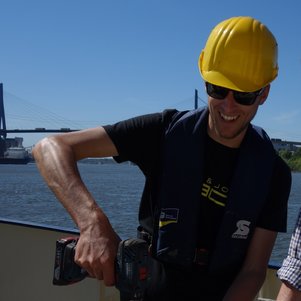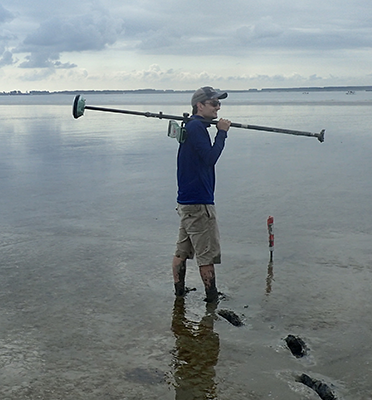As a biologist and soil scientist Julia Gebert often finds herself getting her hands dirty. With mud, that is. In the past two years she has many times boarded a small boat to cruise among the huge container ships in the port of Hamburg while collecting mud samples to aid her in her research into sediments in the river Elbe. Mud to her is so much more than a mucky mess. “We need to understand how mud behaves to enable optimal and eco-friendly maintenance of the nautical depth in the port”
Cruising between those huge ships was impressive and fascinating, Julia Gebert says. ‘But I never felt unsafe.’ Every six weeks for two years she and PhD student Florian Zander climbed aboard a research vessel in the port of Hamburg, one of Europe’s most extensive harbour areas. The local harbour authorities had requested TU Delft to research the properties of the sediments in the Elbe, the river which runs through the city of Hamburg.
Silted up
As is the case in other harbour areas, Hamburg’s shipping channels are silting up because of sediment accumulation, Gebert says. ‘The sediment deposits consist of sand, silt and clay, along with organic material from algae, plants, dead animals and riverbank material. A layer of sediment can easily reach a thickness of several meters and that can compromise shipping. Dredgers are continually scooping up the sediment so ships can make their way in and out of the harbour unimpeded.’
Sediment sources
The sediment deposited in the port originates from different sources , Gebert explains. ‘Part of the sediment is brought into the harbour from the upstream catchment, another part comes in from the North Sea. It is composed of mainly biogenic particles suspended in the water, and of soils eroded from the river banks during flooding. Especially in the ‘urban stretch’ of the Elbe, additional organic matter makes its way into the river from waste water treatment effluents. The amount and composition of the sediment is different in each location. A contributing factor in this is that the river doesn’t flow at the same speed throughout the harbour, and even stops altogether in some places, enabling deposition of very fine, organic-rich material.’
Mud behaviour
The BIOMUD project – part of MUDNET (see box) – is aimed at finding out which factors play a role in the biological breakdown of the organic component of the sediment and how this changes the flow properties of the sediments, important for safe shipping. Gebert: ‘The micro-organisms in organic matter convert it into biogases, such as methane. That breakdown has a bearing on our climate. The process also influences the way the sediment travels through the water, to what extent it gets in the way of the ships and to what extent it is deposited on the river bottom. We are, in short, studying the behaviour of mud.’
Efficient dredging
A better understanding of the behaviour of the mud can also make dredging more efficient, Gebert says. ‘Dredging is a very expensive operation and ports only want to do it if it’s really necessary. If we can find out where and why the micro-organisms are very active in breaking down organic matter and whether this affects shipping positively or negatively, the port can decide to vary its dredging policy, for instance by dredging less or later in a certain area and taking advantage of the natural processes for the management of the water depth.’
Ecological advantages
More efficient dredging also has ecological benefits, Gebert continues. ‘Mud is usually relocated to other places in the river. Organisms need a lot of oxygen during the breakdown process and very reactive mud therefore can have a negative impact on the water quality in the new spot. So if you know how organic matter behaves under certain circumstances, port authorities can decide to put it somewhere else or not putting it there at that moment so the ecological consequences are minimised.’
Research on board a ship
In order to collect the mud samples Gebert and her companion set course for to nine locations within a 30 kilometer radius taking samples from three locations every day. Gebert: ‘Getting the samples was pretty time consuming. The captain had to manoeuvre the boat into the right position and then we used a crane to insert a plastic tube into the river bottom which could be at a depth of 15 meters in some places. As soon as the sediment entered the tube the lid clicked shut and the tube could be hoisted back on board. We then stored the samples in coolers and freezers.’
Manoeuvering
One of the big challenges for the boat’s crew was positioning the boat in the right spot despite strong currents and sometimes high winds, Gebert says. ‘We had all sorts of weather, from hail to thunder storms to scorching hot days.’ It was also necessary to adjust their forays to the shipping schedules of the container ships. ‘It took a bit of getting used to for the skipper and crew because the research activities were very different from their usual routines. Now a couple of demanding scientists made them do all sorts of manoeuvering.’
Data analysis and observations
The samples that were collected during a total of 13 boat trips (and more to come) have ended up in different places. Gebert: ‘Next to the mud we take home to the Geo lab at TU Delft, some remain at the soil lab of the University of Hamburg for immediate research, others go to the GEOMAR lab in Kiel for microbiological analysis. The mud that we bring home is also used for rheological research in the twin project RHEOMUD, led by Dr. Claire Chassagne (Department of Hydraulic Engineering). Although we still have to analyse the data we have already seen clear trends. The breakdown process of organic matter is much slower downstream than upstream, for example. We are now going to fit the pieces of the puzzle together to get the complete picture of why this is.’
Broader horizon
Even after years of experience as a biologist and soil scientist Gebert can still be surprised by what she finds. ‘I hadn’t expected that the division between the sediment layers would be so distinctive, in colour, smell as well as structure. Mud will never cease to fascinate me. It’s so much more than a mucky mess. It’s full of life, with all sorts of biological, chemical and physical processes going on inside it.’ The experience also taught Gebert about other disciplines, such as rheology and the science that goes into maintaining and managing a huge port area such as Hamburg. Both will stand her in good stead in future projects. ‘We are about to broaden our horizon. Soon we will be including the ports of Rotterdam, Amsterdam, Antwerp, Bremen and Rostock in our research.’
MUDNET is a platform for research projects about sediment behaviour in ports i.e. BIOMUD, RHEOMUD, NAUTIMUD, 4DMUD and SONIMUD.

